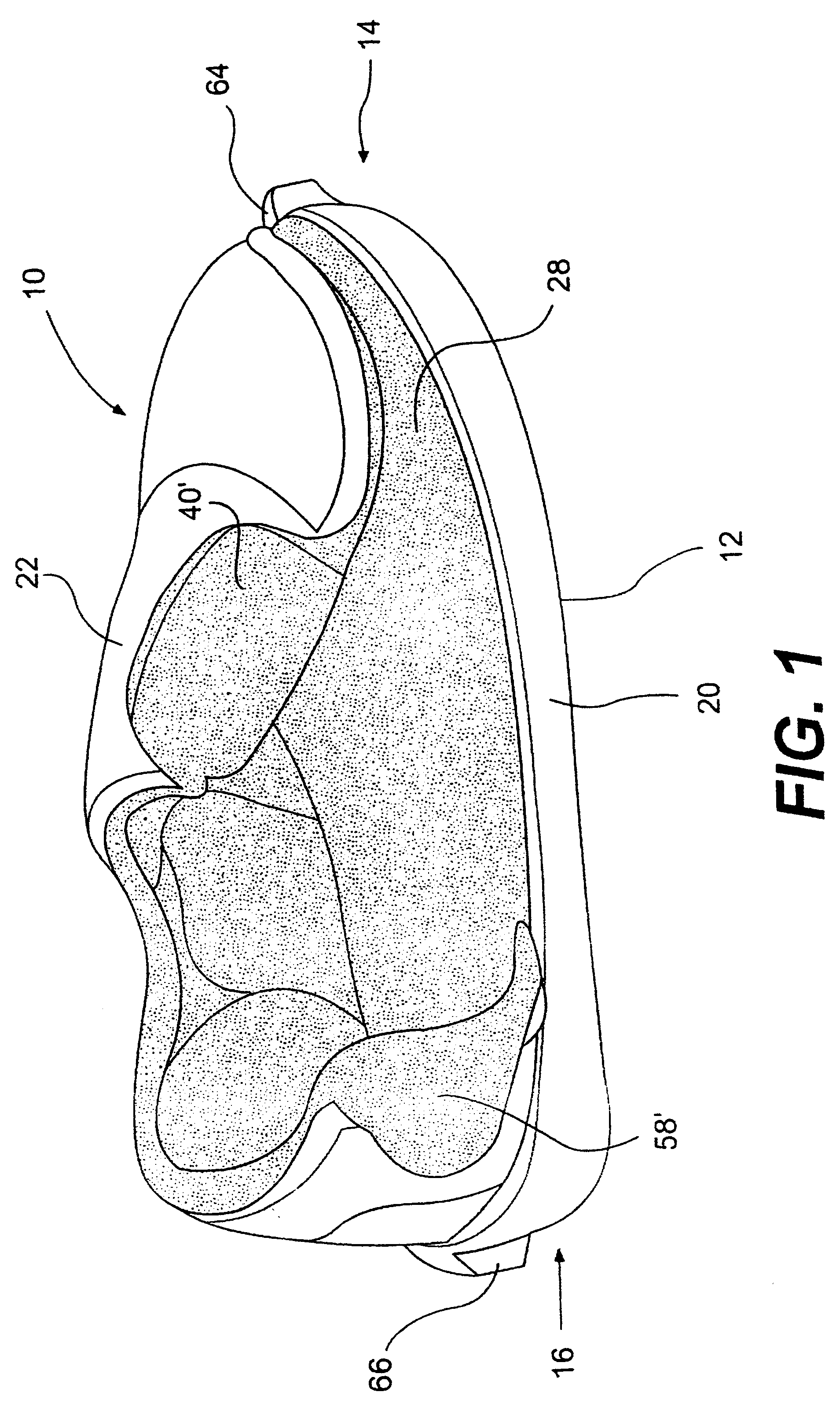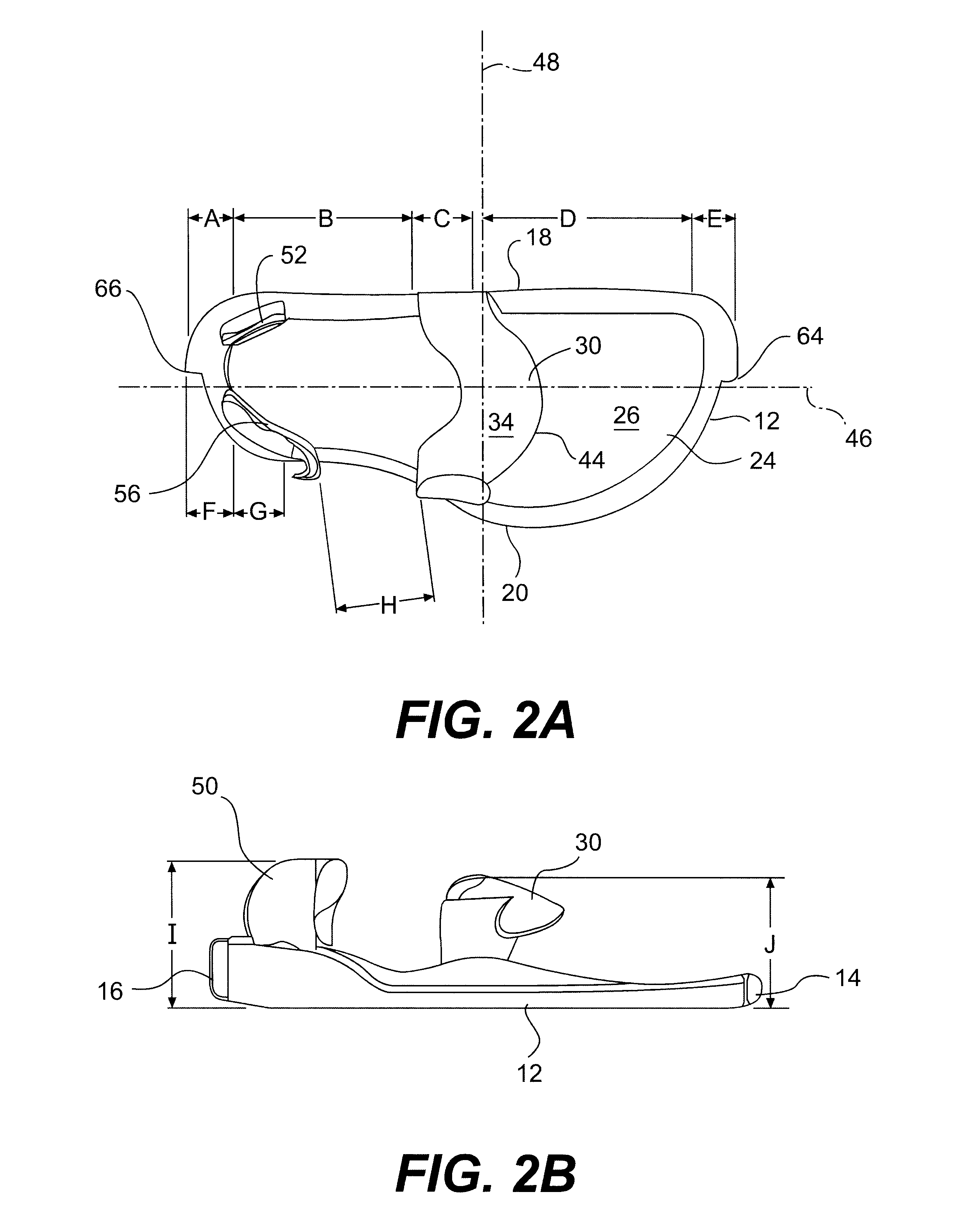Side entry footwear
a technology for side entry footwear and footwear, applied in the field of footwear, can solve the problems of difficult to wear traditional footwear, not holding the foot well, and existing footwear is often not fitted for the elderly
- Summary
- Abstract
- Description
- Claims
- Application Information
AI Technical Summary
Benefits of technology
Problems solved by technology
Method used
Image
Examples
Embodiment Construction
In accordance with the invention and as illustrated in FIG. 1, footwear 10 may include a sole 12 having a toe region 14 and a heel region 16. As illustrated in FIG. 2A, the sole 12 may have first and second opposing lateral sides 18 and 20, respectively.
While the invention, in its broadest sense, does not require any particular material for the sole, in a preferred embodiment, the sole is made up of lightweight material having a coefficient of friction sufficient to prevent slipping and being configured to absorb shock and / or force and substantially return to its original shape thereafter. One material that may be particularly suitable for the sole is polyurethane foam.
As illustrated in FIG. 2A, a ridge 24 surrounds the perimeter of the sole. The ridge assists in preventing the foot from slipping out of the opening during walking. In an alternative embodiment (not shown), the ridge may only partially surround the periphery of the sole. In a further alternative embodiment (not shown)...
PUM
 Login to View More
Login to View More Abstract
Description
Claims
Application Information
 Login to View More
Login to View More - R&D
- Intellectual Property
- Life Sciences
- Materials
- Tech Scout
- Unparalleled Data Quality
- Higher Quality Content
- 60% Fewer Hallucinations
Browse by: Latest US Patents, China's latest patents, Technical Efficacy Thesaurus, Application Domain, Technology Topic, Popular Technical Reports.
© 2025 PatSnap. All rights reserved.Legal|Privacy policy|Modern Slavery Act Transparency Statement|Sitemap|About US| Contact US: help@patsnap.com



